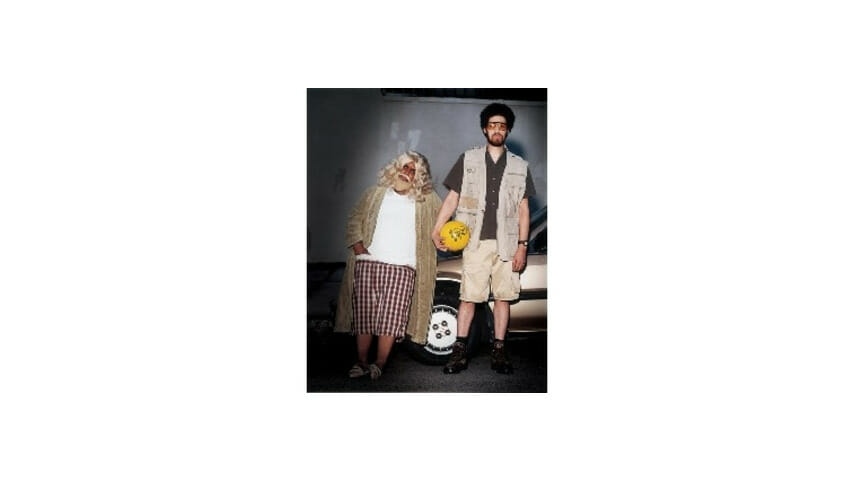
In any other context, the vision of Cee-Lo at the helm of a sold-out venue full of screaming girls would be, let’s face it, something of an anomaly. Yet such is the beauty of a internet-fueled economy where a knob-tweaker like Danger Mouse and a singer/rapper better known in hip hop circles than most teenager’s ipods can come together and crack the scene wide open with a concept like Gnarls Barkley. The trouble with an international hit like “Crazy,” their thumping anthem to suicidal psychosis, is that fame has escalated beats and good fun into a marketing mania. Gnarls Barkley is almost too well known for its thematic costuming, its dual-star line-up, and the hype constructed around its fictional namesake personality. The cynic in me quietly worried that I was about to be subjected to something that was more kitsch than content, more DAT than dope. How would Cee-Lo and Danger Mouse turn their 30 minute Technicolor trip hop romp, St. Elsewhere, into a viable set of songs?
The answer, apparent the minute the band came out dressed in its signature hospital- themed OR scrubs and nurse outfits, turned out to be sheer physical volume. Danger Mouse, aka Brian Burton, had employed a veritable performing army that fanned out across the stage: three back-up singers, the required “backbone” of drummer, bassist, keyboardist, guitarist, and an electric string quartet. Throw in the mighty Mouse himself, and the songs became a blast of stereophonic rainbow, each presented as slightly looser jams of the recorded originals: the jangly Motown beats of “Smiley Faces,” their cover of “Gone Daddy Gone,” and the sexy swamp rock of “The Boogie Monster,” a song that Lux Interior would be proud to cover.
Not to say that there weren’t noticeable differences, too. Take “Feng Shui,” a breezy rap where Cee-Lo pontificates on the perfection of his furniture, the beauty of his physical movements, and of course, the fact that his rhyming fu is the greatest. Onstage it was pulled out of its pretty lacquered box to become a weed-fueled guitar laden head-trip. The maniacal robotic frenzy of “Transformer” was also revamped, slowed down into an almost acoustic reverie of hissing breakbeats and garnished with swooning background vocals.
All of these elaborate musical gymnastics would have been nothing without Cee-Lo, whose vocal presence galvanized everything around it into that elusive, ever heralded fictional being that bears their name. There is a searing quality to his falsetto; a heat that welds a tune like “Crazy” into the full-blown acid operetta that it becomes live. The son of two preachers, Cee-Lo never hesitated to invoke the loftier cadences of gospel at right moments, yet also knew when to back down off the pulpit and give up some bouncy R&B, as was the case with their surprising cover of Holly Golightly’s “There’s an End,” (itself in turn a cover, as the original was penned by the Greenhornes).
Lest the crowd confuse him for a man of the cloth, however, the singer’s crowd banter was peppered with sly, half-joking entreaties for the ladies to shed clothing and display their finer physical attributes. It wasn’t clear if there were any takers on that offer in that packed house, but it wasn’t exactly necessary either with the outfits onstage. After all, if there is something sexier than a tall blonde “nurse” straddling an electric cello, I’d love to hear about it. Indeed, Gnarls Barkley offered up a cinematic blend of spark, sex, and samples, with the only complaint, (heard frequently upon the slow painful exit from the crowded venue), being that it was far too short of a set, even with covers. Of all the things a crowd could want from a band, however, “more” is obviously the most desirable of answers.